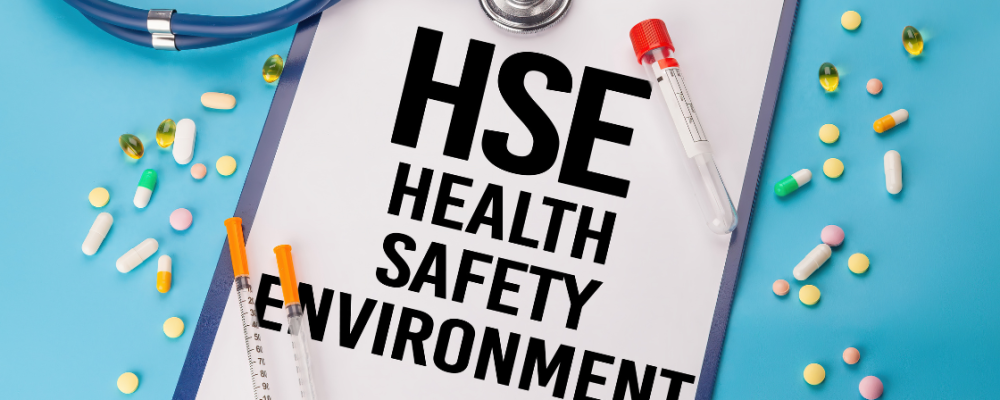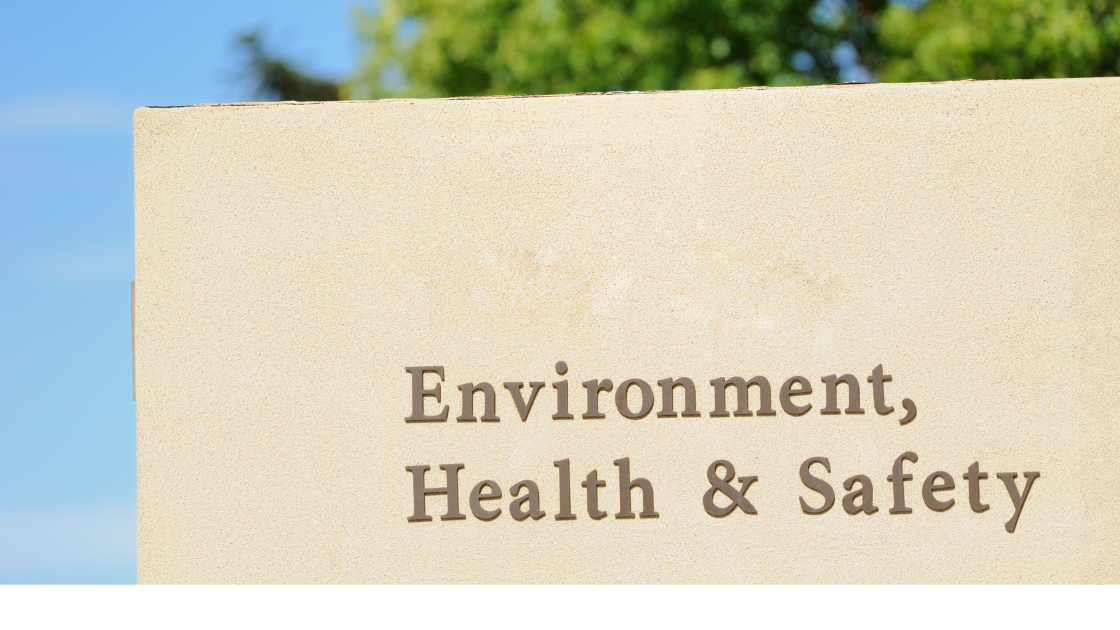Things You Should Know About Environmental, Health & Safety?
Environmental health and safety (EHS) refer to the practice of protecting human health and the environment by identifying and controlling potential hazards in the workplace or the natural environment. This includes the assessment and management of risks associated with environmental factors such as air, water, soil, and hazardous materials.
In the workplace, EHS programs aim to prevent accidents, injuries, and illnesses by implementing policies and procedures that address a range of issues such as hazardous materials handling, emergency response, workplace ergonomics, and personal protective equipment. EHS programs also ensure that businesses comply with government regulations and industry standards related to health, safety, and environmental protection.
In the natural environment, EHS involves the assessment and management of environmental risks such as pollution, waste disposal, and climate change. EHS programs in this context focus on reducing the negative impacts of human activities on the environment and promoting sustainable practices that protect the planet and its natural resources.
Overall, environmental health and safety is a multidisciplinary field that involves various disciplines, including biology, chemistry, engineering, and law, among others. Its ultimate goal is to promote the health and safety of people and the environment by preventing and mitigating potential hazards.
Why is Environmental, Health & Safety Important?
Environmental, Health and Safety (EHS) are important for several reasons:
- Protecting human health: EHS programs aim to identify and control potential hazards that could cause harm to human health. By implementing measures to prevent accidents, injuries, and illnesses, EHS helps ensure that people are safe and healthy in their workplaces and communities.
- Preventing environmental degradation: EHS programs also help protect the environment by identifying and managing risks associated with environmental factors such as air, water, soil, and hazardous materials. By reducing pollution and promoting sustainable practices, EHS can help preserve natural resources and reduce the negative impact of human activities on the planet.
- Legal compliance: Businesses and organizations are required by law to comply with regulations and standards related to environmental health and safety. EHS programs help ensure that organizations are meeting these requirements and avoiding legal and financial penalties.
- Improving business performance: EHS programs can also contribute to the success and sustainability of businesses by improving employee productivity, reducing absenteeism, and enhancing the reputation of the company among customers, investors, and regulators.

How can Businesses Comply with Environmental, Health & Safety Regulations?
Businesses can comply with environmental health and safety (EHS) regulations by taking the following steps:
- Identify and assess EHS risks: Businesses should identify potential EHS hazards and assess the risks associated with their operations. This can be done through hazard assessments, risk assessments, and environmental impact assessments.
- Develop and implement EHS policies and procedures: Based on the results of the risk assessment, businesses should develop and implement EHS policies and procedures that address identified hazards. This includes implementing measures to prevent accidents, injuries, and illnesses, as well as to reduce environmental impact.
- Train employees: All employees should be trained on EHS policies and procedures, including how to identify and report hazards, how to use personal protective equipment and emergency response procedures.
- Monitor and measure EHS performance: Businesses should establish metrics and monitor and measure their EHS performance regularly to ensure that they are meeting EHS goals and complying with regulations.
- Comply with regulations and standards: Businesses should be aware of EHS regulations and standards that apply to their operations and ensure compliance with all applicable requirements.
- Continuously improve EHS performance: Businesses should strive to continuously improve their EHS performance by conducting regular audits and reviews, seeking feedback from employees and stakeholders, and implementing corrective actions as necessary.
By following these steps, businesses can comply with EHS regulations and ensure the health and safety of their employees and the environment.
The 4 Environmental, Health & Safety (EHS) Principles
The four EHS (Environmental Health and Safety) principles, also known as the “EHS Pillars,” are:
- Prevention: This principle focuses on identifying and preventing potential hazards before they occur. By implementing measures such as hazard assessments, risk management, and training, businesses can reduce the likelihood of accidents, injuries, and illnesses.
- Compliance: Compliance involves ensuring that businesses are meeting all relevant laws, regulations, and industry standards related to EHS. This includes monitoring EHS performance, maintaining accurate records, and responding promptly to any identified compliance issues.
- Communication: Effective communication is essential for EHS. This includes communicating EHS policies and procedures to all employees, providing training and information on hazards and risks, and establishing a process for reporting and responding to EHS concerns.
- Continual Improvement: The principle of continual improvement emphasizes the need for ongoing evaluation and improvement of EHS performance. By monitoring and measuring EHS performance, businesses can identify areas for improvement, implement corrective actions, and continuously improve their EHS programs.
Checklist for Managing Environmental, Health & Safety Risks
Here is a checklist for managing environmental health and safety (EHS) risks in a workplace or organization:
- Identify potential EHS hazards: Conduct a hazard assessment to identify potential EHS hazards that may exist in the workplace, including physical, chemical, biological, and ergonomic hazards.
- Assess EHS risks: Assess the risks associated with identified hazards, considering the likelihood and severity of harm that could result from exposure to each hazard.
- Develop and implement EHS policies and procedures: Develop and implement policies and procedures to prevent and manage identified hazards, including training on proper handling and use of hazardous materials, safety procedures for machinery and equipment, and emergency response plans.
- Provide personal protective equipment (PPE): Provide appropriate personal protective equipment to employees and ensure that it is used properly.
- Train employees: Provide training on EHS policies and procedures, including hazard identification, risk assessment, and emergency response.
- Monitor and measure EHS performance: Establish metrics for monitoring and measuring EHS performance, and regularly review EHS performance against these metrics.
- Maintain records: Maintain accurate records of EHS performance, including training records, hazard assessments, risk assessments, and corrective actions taken.
- Ensure compliance: Ensure compliance with all relevant EHS regulations, standards, and guidelines.
- Communicate effectively: Communicate EHS policies and procedures to employees, and establish a process for reporting EHS concerns and incidents.
- Continuously improve: Continuously evaluate and improve the EHS program through ongoing hazard assessments, risk assessments, and reviews of EHS performance.
By following this checklist, organizations can manage EHS risks effectively, protect the health and safety of their employees, and comply with regulations and standards related to environmental health and safety.

Case Studies of Businesses That Have Successfully Implemented Environmental, Health & Safety Policies
- Procter & Gamble: Procter & Gamble is a consumer goods company that has made significant investments in EHS over the years. The company has established EHS goals and metrics, implemented hazard assessments and risk assessments, and provided training to employees on EHS policies and procedures. Procter & Gamble has also implemented programs to reduce waste and water usage and to promote renewable energy. As a result of these efforts, the company has received numerous awards and recognition for its EHS performance.
- 3M: 3M is a global science company that has been recognized for its leadership in EHS. The company has implemented a comprehensive EHS program that includes hazard assessments, risk assessments, and emergency response plans. 3M has also made significant investments in renewable energy, energy efficiency, and water conservation. As a result of these efforts, 3M has been recognized by numerous organizations for its EHS performance, including the Dow Jones Sustainability Index and the U.S. Environmental Protection Agency.
- Ford Motor Company: Ford is an automotive company that has implemented a robust EHS program that focuses on reducing environmental impact and protecting the health and safety of its employees. The company has established goals and metrics for EHS performance and has implemented programs to reduce greenhouse gas emissions, conserve water, and manage waste. Ford has also made significant investments in renewable energy, energy efficiency, and sustainable materials. As a result of these efforts, Ford has received numerous awards and recognition for its EHS performance, including the National Safety Council’s Green Cross for Safety award.
5 Ways to Manage Environmental, Health & Safety Risks
Here are five ways to manage environmental health and safety (EHS) risks:
- Identify hazards: Conduct a thorough assessment of your business activities to identify potential hazards to people and the environment. This can include identifying physical, chemical, and biological hazards, as well as the potential for exposure to these hazards.
- Assess risks: Once you have identified hazards, you need to assess the level of risk associated with each hazard. This involves evaluating the likelihood and severity of harm that could result from exposure to the hazard.
- Implement controls: Once you have assessed risks, you need to implement controls to manage them. This can include engineering controls, administrative controls, and personal protective equipment. Examples of engineering controls include ventilation systems, barriers, and safety interlocks. Administrative controls can include training, policies and procedures, and signage. Personal protective equipment can include gloves, respirators, and safety glasses.
- Monitor and review: To ensure that controls are effective, you need to monitor and review EHS performance on an ongoing basis. This can involve conducting regular inspections, tracking EHS metrics, and reviewing incident reports.
- Continuous improvement: Finally, you need to continuously improve your EHS program over time. This can involve analyzing EHS data to identify trends and areas for improvement, conducting audits, and engaging employees in the EHS program. By continuously improving your EHS program, you can reduce risks and prevent incidents from occurring.
Conclusion
In conclusion, environmental health and safety (EHS) is an important aspect of business operations that focuses on protecting the health and safety of employees and the environment. By implementing effective EHS programs, businesses can reduce risks and prevent incidents, ensure compliance with regulations and standards, and build a positive reputation for being socially and environmentally responsible.
To manage EHS risks effectively, businesses must identify hazards, assess risks, implement controls, monitor and review EHS performance, and continuously improve their EHS programs. Additionally, there are many useful resources available for businesses and individuals who want to learn more about EHS, including government agencies, professional organizations, and non-profit organizations.
By prioritizing EHS and utilizing these resources, businesses can promote a safer and healthier workplace, reduce environmental impact, and ensure long-term success and sustainability.








